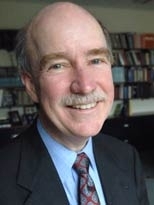From science and technology to systems analysis and economics, management and social science, MIT pursues the energy-environment agenda in more than 40 laboratories, programs, departments and centers.
"What the MIT Energy Initiative is really about is multidisciplinary, multifaculty, multiyear sustained research efforts," said Robert Armstrong, deputy director of MITEI.
The initiative creates new opportunities to leverage MIT's multiple strengths in ways that make it value-added to corporations, donors and government sponsors. "If we work broadly enough and well enough, we will have a major impact in the marketplace and in government policy," Armstrong said. "It's important for a place like MIT to develop 'gee whiz' technology, and it's also important to place it in a context so it gets deployed by industry. That's what a lot of companies look to us for."
Armstrong highlighted the initiative's scope, flexibility and range. "We're going to have a mix of technology thrusts, from interesting smaller-scale applications to some at very large scales," he said. "We're also unusual because we can cover the supply side as well as the demand side in a wide range of areas such as efficiency in heat management, buildings and transportation."
A newly identified MITEI research thrust is enabling science or "tools" that, instead of looking at a particular energy system or technology, explore basic science through fields such as catalysts, multi-electron-transfer chemistry important for solar and fuel cells, and methane chemistry.
George M. Whitesides of Harvard, speaking at a May 1 MIT energy colloquium, emphasized for the student audience the importance of basic research. A focus on tools and basic energy research could provide the answers for many of today's seemingly intractable problems and could, in the longer term, fundamentally transform how we produce, distribute and consume energy, he said.
Underscoring the global nature of energy, Armstrong, MITEI Director Ernest Moniz and others have been traveling around the world to secure support from sources ranging from industry giants to entrepreneurial startups and individuals who are passionate about solving global energy problems.
Armstrong said he and Moniz have been heartened to find that there is "an extraordinary amount of interest" in what MIT has to offer. Faculty research teams have been involved by presenting overviews of their work to companies and by identifying multidisciplinary research challenges that can have considerable consequence in the supply, delivery and use of energy and in mitigating environmental consequences.
MITEI will have a four-tier system in place for corporate and individual involvement, including sponsored research programs and an Institute-wide research seed fund program for novel approaches to meeting energy needs. Depending on the type of membership, donors can earmark funds for education, undergraduate research opportunities, graduate fellowships in industry, seed funding for alternative energy research and support for various MIT laboratories and centers engaged in energy research.
University-industry consortia and partnerships will be established around flagship projects of mutual interest. "We're engaged with a broad range of energy companies, from oil companies to utility providers to automobile manufacturers. If they work in energy, we've probably been talking to them," Armstrong said.
A version of this article appeared in MIT Tech Talk on May 9, 2007 (download PDF).







